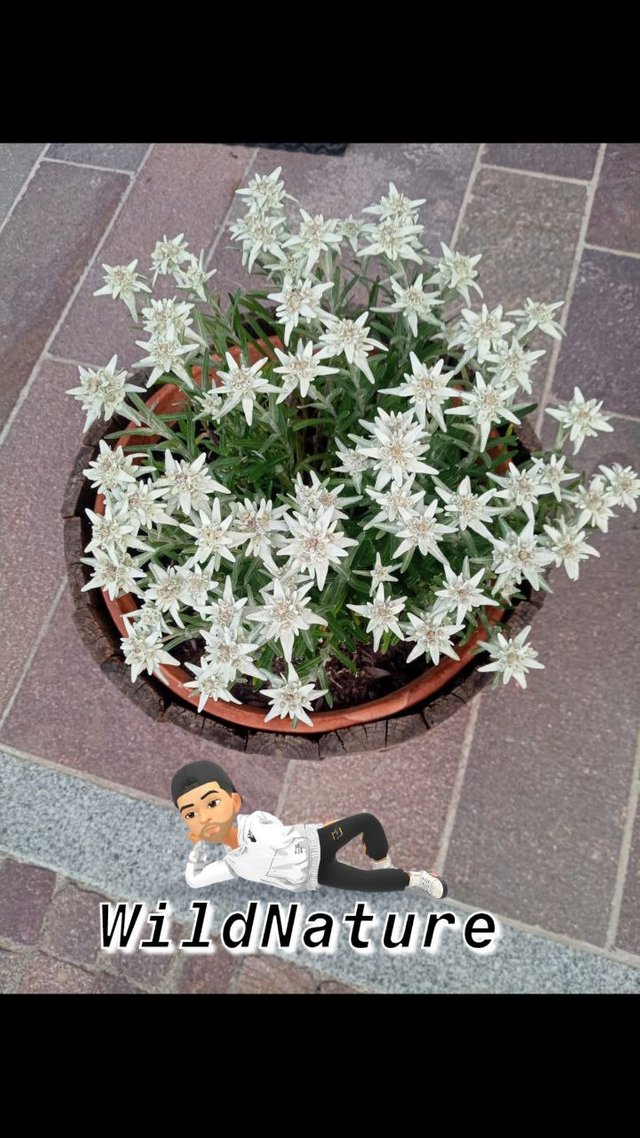Stella alpina ⭐️🤍
The English version follows in the end.
Versione Italiana 🇮🇹🇮🇹🇮🇹

La Stella alpina, conosciuta scientificamente come Leontopodium alpinum, appartiene alla famiglia delle Asteraceae. Questa pianta è originaria delle regioni montuose dell'Europa, inclusi i Pirenei, i Carpazi e le Alpi, ed è nota per il suo aspetto distintivo e per la sua capacità di prosperare in ambienti difficili.
Il Leontopodium alpinum è una pianta erbacea perenne. Le foglie sono lanceolate, di colore verde-grigiastro e coperte da una peluria bianca che conferisce loro un aspetto vellutato. Questa peluria non solo dà alla pianta il suo caratteristico aspetto, ma serve anche a proteggerla dalle condizioni climatiche avverse, come il freddo e il vento.
I fiori della Stella alpina sono la caratteristica più riconoscibile della pianta. Ogni infiorescenza è composta da piccoli fiori gialli raggruppati al centro, circondati da brattee bianche e pelose che formano una stella. Queste infiorescenze compaiono generalmente da luglio a settembre, adornando le pendici montane con il loro fascino inconfondibile.
Questa pianta preferisce posizioni soleggiate e cresce bene in terreni calcarei, ben drenati e poveri di nutrienti, tipici degli habitat montani. La Stella alpina è molto resistente al freddo e può tollerare condizioni di siccità, il che la rende adatta a vivere in ambienti estremi dove poche altre piante possono sopravvivere.
La Stella alpina è anche simbolo di purezza, coraggio e amore eterno, ed è spesso associata alle leggende e alle tradizioni delle regioni alpine. È protetta in molti paesi europei a causa della raccolta indiscriminata in passato, che ne ha minacciato la sopravvivenza in natura.
E voi avete mai visto una Stella alpina durante le vostre escursioni in montagna? Cosa ne pensate del suo aspetto unico e della sua resistenza al freddo? Condividete le vostre impressioni nei commenti e lasciate un "like" se apprezzate la bellezza di questa pianta straordinaria! 👍🌸🌿💚
(Foto scattata da me) 📸
English version 🇬🇧🇬🇧🇬🇧

The Edelweiss, scientifically known as Leontopodium alpinum, belongs to the Asteraceae family. This plant is native to the mountainous regions of Europe, including the Pyrenees, the Carpathians, and the Alps, and is known for its distinctive appearance and its ability to thrive in harsh environments.
Leontopodium alpinum is a perennial herbaceous plant. The leaves are lance-shaped, greenish-gray in color, and covered with white, woolly hairs that give them a velvety texture. This hair not only gives the plant its characteristic appearance but also protects it from adverse climatic conditions, such as cold and wind.
The flowers of the Edelweiss are the most recognizable feature of the plant. Each inflorescence consists of small yellow flowers grouped in the center, surrounded by white, woolly bracts that form a star shape. These inflorescences usually appear from July to September, adorning the mountain slopes with their unmistakable charm.
This plant prefers sunny locations and grows well in calcareous, well-drained, and nutrient-poor soils, typical of mountain habitats. The Edelweiss is highly resistant to cold and can tolerate drought conditions, making it suitable for living in extreme environments where few other plants can survive.
The Edelweiss is also a symbol of purity, courage, and eternal love and is often associated with the legends and traditions of the Alpine regions. It is protected in many European countries due to past over-collection, which threatened its survival in the wild.
Have you ever seen an Edelweiss during your mountain hikes? What do you think of its unique appearance and cold resistance? Share your impressions in the comments and leave a "like" if you appreciate the beauty of this extraordinary plant! 👍🌸🌿💚
(Photo taken by me) 📸
